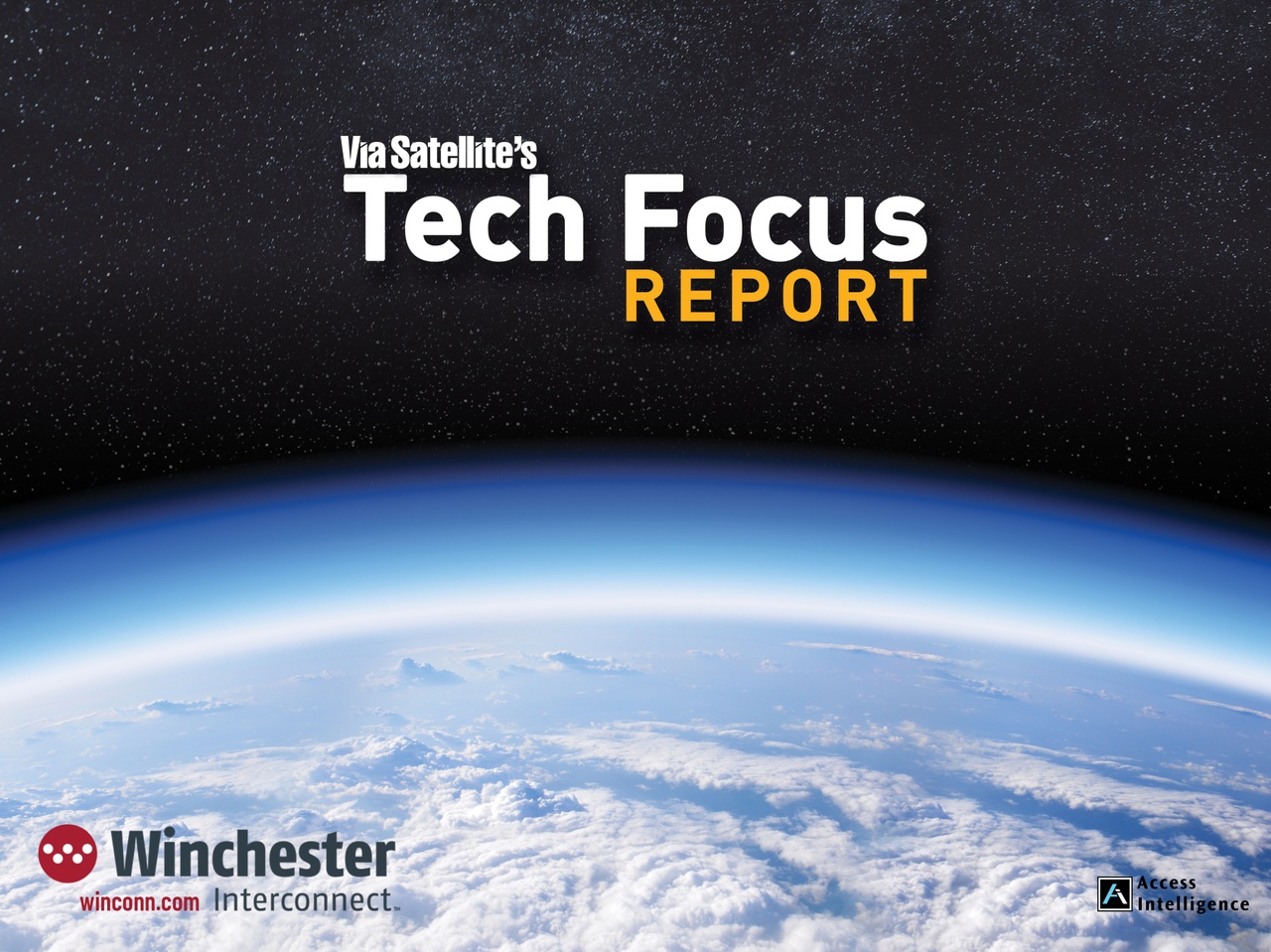
Seeking Customers for the Future LEO Economy
What’s next for the ‘made in space’ market of goods in microgravity?March 25th, 2024Varda Space’s mission is to expand “the economic bounds of humankind,” but despite co-founder, CEO and President Delian Asparouhov’s self-described “deep passion” for aerospace, you’re more likely to find him at a pharmaceutical trade show than a NASA conference.
The company, which was co-founded in late 2020 by Asparouhov, Will Bruey, and Daniel Marshall, is focused on manufacturing drugs in Low-Earth Orbit (LEO), which benefits from microgravity — an environment that improves the quality of drug formularies.
“What microgravity allows you to do is basically very different than what you can do down here on Earth,” he says, offering the recent example of Merck & Co.’s 2022 study, in which the pharmaceutical giant leveraged microgravity to identify key variables in the crystallization of pembrolizumab, the active pharmaceutical agent in the immunotherapy cancer treatment drug Keytruda.
The Merck research team was able to produce highly uniform, stable concentrated crystalline suspensions of pembrolizumab on the ISS National Lab – a result that many considered groundbreaking.
Asparouhov explains that because there is less convective pressure in microgravity, researchers achieved a more mono modal distribution of the size of the crystal structure.
“So, what does that mean? Instead of having a patient come in every day to an IV clinic, send them home with seven syringes, and they just do one syringe once a day, in the safety of their home. It’s cheaper distribution, it's better adherence for the patient, better patient experience," he says.
Voices like Asparouhov are growing louder, as the possibilities of what can be done in a microgravity environment expand, along with hopes for a robust future space economy.

Between the significant drop in launch costs, alongside huge evolutions in satellite technology and reusable rockets, many — including investors and NASA’s In Space Production Applications (InSPA) program— believe we’re at the precipice of the next big thing. In the not-too-distant future, space factories could become as ubiquitous as factories in, say, Kansas.
According to a recent McKinsey report, many companies believe that the environment of space could help them discover new products, enhance their current offerings, or decrease development timelines. The number of patents with “microgravity” in the title or abstract increased from 21 in 2000 to 155 in 2020.
Yet, as expected, stakeholders have slightly different takes on who the customers of the future will be, which industries will prosper, and to what extent commercial ventures can sustain themselves aside from government funding.
Where Microgravity and Medicine Meet
Redwire Corporation, a space infrastructure company founded in 2020, is also betting big on space-based biopharma and medical manufacturing.
In November 2022, Redwire’s new BioFabrication Facility (BFF) launched to the ISS for the purpose of leveraging 3D bioprinter technologies to manufacture human tissue in microgravity. The long-term goal is to use 3D bioprinting technologies to help alleviate organ shortages for patients in need of transplants by printing replacement organs and tissues.
In 2023, the company announced a partnership with Sierra Space to collaborate on commercial pharmaceutical and biotech R&D and manufacturing in LEO. Under terms of the agreement, Redwire’s biotechnology and manufacturing technologies will be integrated into Sierra Space’s Large Integrated Flexible Environment (LIFE) habitat platform, making them available to customers and enabling commercial breakthroughs for pharmaceutical drug development and human health research.

“Increasingly, what we're focusing on for our customers and for ourselves are drug-seed crystals and the regenerative medicine space,” says Richard Boling, Redwire vice president. “That means 3D biofabrication of organs, tissues, and even organoids which can be a stand in for animal testing.”
Thanks in part to the precedent set by Merck when it developed an improved, crystalized, Keytruda formulary in space, other leading pharmaceutical companies are leaning in, he adds.
“They’re warming for sure,” says Boling, noting that Redwire is working with leading pharmaceutical companies such as Eli Lilly to manufacture new and improved forms of their products in space. “We're launching, processing, returning, launching, processing, returning. Creating new crystal forms of existing drugs breathes new life into existing products, and can create new applications for other indications, and improve the options for administration to the patient.”
Beyond pharma, there are multitudes of potential health-related use cases for microgravity that are gaining traction. Among them: Gene therapies that can lead to the detection of diseases such as Parkinson’s in utero.
Space Tango, which was recently awarded a NASA SBIR Ignite contract to support the development of a robotic laboratory hood known as TangoBox, has a foothold in this area and others. In November, Space Tango announced it successfully installed life science investigations on the International Space Station on SpaceX’s 29th Commercial Resupply Services mission. Live organoid, stem cell, and drug development research from Space Tango flights partners Cedars-Sinai, the University of California San Diego, the Sanford Stem Cell Institute, Mount Sinai, Sachi Bioworks, and Encapsulate were transferred from the Crew Dragon to the ISS for a 30-day mission.
“Convection, temperature, pressure, and buoyancy are four scientific properties that are increasingly within our control,” says Sita Sonty, Space Tango CEO. “It’s not that those four scientific properties unlock a very specific article that you can make. They actually unlock a multitude of articles that you cannot make terrestrially, whereby soft biomaterials are structured to mimic the human body’s environment without the need for complex 3D scaffolding techniques.”

For example: Scaffolding in microgravity can shorten the timeline for an organization like CRISPR to develop a particular individual gene therapy, she adds.
“You can do it faster because you have ... convection, temperature, pressure, and buoyancy in your control to enable scaffold-free cultures to maintain their structure with a higher throughput, so that you're making more individual batches of gene therapies,” says Sonty. “So, you can consider the not just hypothesis scientifically but the economic reality of creating stem cell based individual patient gene therapies at scale.”
Smarter Semiconductors
Space Forge, a six-year-old British aerospace manufacturing company headquartered in Cardiff, Wales, is also betting big on microgravity, not just for medicine, but also for semiconductor manufacturing.
The company is now expanding to the U.S., with a prototype lab in Maryland that will initially focus on creating advanced materials for semiconductor manufacturing and its ForgeStar1 reusable satellites.
“I think we'll see the adoption of this move so rapidly,” says Andrew Parlock, the U.S. managing director. “We're starting with semiconductor substrates, but the sky's the limit on what we can create in orbit, no pun intended. We're hoping to get to a point where we just are manufacturing things that simply can't be done on Earth, the next generation of materials.
He imagines that 10 years from now, cell phones will have semiconductors manufactured in space that allow batteries to last for two weeks — and it won’t even be a curiosity that they are manufactured in space.
Parlock likes to joke that microgravity offers a “near perfect” and contaminant-free environment that would make a designated clean room on Earth jealous.
“You have this near-perfect vacuum in space because you have no convective currents,” says Parlock. “That concept of eliminating convection allows you to mix ingredients and reagents in a way that you just simply couldn't do on Earth. It's just not even possible.”
Over the last year, Space Forge has secured a number of partnerships, with the likes of Northrop Grumman Corporation and British Telecom, for on-orbit manufacturing of semiconductors.
“We’re ignoring the things that you know, a 1G environment makes really well, like silicon carbide chips,” says Parlock. “We would be able to make a silicon carbide chip, maybe 10 percent or 20 percent better in orbit? Sure, but that's not where we're going. We need to go to the place where these things can't be created on Earth, where the terrestrial environment doesn't allow them to be created.”
Kevin Engelbert, NASA Portfolio Manager for In Space Production Applications (InSPA), which focuses on in-space research and development, says that NASA-funded research in the use of space for microgravity is promising.
“The data show that over 80 percent of the investigations found crystal growth in microgravity was better than on Earth,” says Engelbert. “We’re fairly confident that in the next few years, we're going to develop enough data to validate and prove to the semiconductor industry that in the future crystal substrates should be made in space. So, we think it'll be a key part of the overall supply chain for semiconductors in the decades to come that those crystal substrates will come from space.”
Economic Independence and Sustainability
NASA’s InSPA is also offering its support by way of grants in excess of $38 million for technologies that enable innovative companies to mature their concepts and stimulate demand for future markets.
“Our goal is to enable a pretty healthy portfolio of sustainable and scalable in-space production,” says Engelbert. “Businesses are trying to find other customers of the Low-Earth Orbit economy, increase the non-NASA demand for users of future commercial LEO destinations so that there's less reliance on NASA as the anchor customer. More importantly for the portfolio, [this will bring] real direct tangible benefits, from Low-Earth Orbit microgravity to broader sets of stakeholders on Earth.”
Yet while NASA says it is trying to foster a space economy that’s less reliant on government, there is some skepticism on the part of at least a few investors about whether most of the startups can untether themselves from the likes of NASA.
Asparouhov says the Varda Space business model is built to operate independently of human space stations, to save cost. Varda’s approach involves shuttling its 300-kilogram satellite, filled with a small pharmaceutical lab, to LEO via a SpaceX Falcon 9 rideshare, and back to Earth via a reentry capsule that brings the finished ingredients back down. “Everything is fully automated, without a human on board,” he adds.
Asparouhov emphasizes Varda Space is pursuing a commercial-first approach, and soon plans to announce what he says is the only commercial microgravity manufacturing contract, which will be in the tens and tens of millions of dollars.
“This is a company that can now make revenue entirely independently of the government, versus everybody else is still focused on these small academic research grants,” he says. “Yes, the Varda approach is much riskier. We rely only on our commercial customers ultimately to make this business model close. But if you don't at least try to do that, you're never going to get there.” VS







